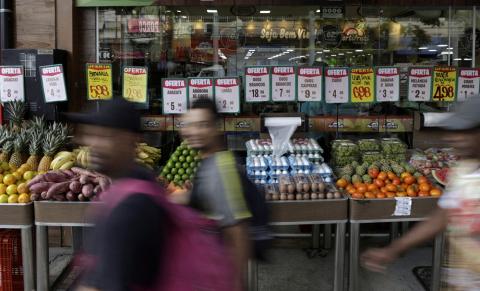
The average UK house price reached a fresh record high in August while annual inflation cooled to a five-month low, after the partial end of the stamp duty holiday in England and Northern Ireland.
Halifax, one of the country’s biggest mortgage lenders, said the average cost of a property increased by 0.7%, or £1,789, to £262,954, topping the previous peak of £261,642 recorded in May.
The annual rate of house price inflation slowed to 7.1%, the lowest since March and down from 7.6% in July. However, compared with June 2020, when the housing market began to reopen after the first Covid-19 lockdown, prices remain more than £23,600, or 9.9%, higher.
Prices have jumped the most in Wales, up 11.6% year on year and the only double-digit rise recorded in the UK during August. The south-west also recorded strong growth at 9.6%, probably reflecting the ongoing demand for rural living within the region, Halifax said. Annual house price inflation in the north-east rose to 8% and Northern Ireland picked up to 9.3%, while price growth in Scotland slowed to 8.4%.
Greater London continues to lag behind the rest of the country, registering a 1.3% annual rise in prices in August, the smallest in 18 months. Over the latest three months, it was the only region or nation to record a fall in prices, of 0.3%. However, at £508,503, typical properties in the capital remain far above the national average national price.
Russell Galley, the managing director of Halifax, said: “Much of the impact from the stamp duty holiday has now left the market, as highlighted by the drop in industry transaction numbers compared with a year ago. However, while such government schemes have provided vital stimulus, there have also been other significant drivers of house price inflation.”
He said structural factors had driven record levels of buyer activity, such as the demand for more space amid greater home working. There is also a limited supply of properties for sale.
“These trends look set to persist and the price gains made since the start of the pandemic are unlikely to be reversed once the remaining tax break comes to an end later this month,” he added. “Moreover, the macroeconomic environment is becoming increasingly positive, with job vacancies at a record high and consumer confidence returning to pre-pandemic levels.”
Anthony Codling, an independent housing analyst, said: “Large numbers continue to look for more space to facilitate working from home and countless others are looking for additional homes to accommodate the emerging hybrid working from home model of two to three days in the urban office and two to three days in the rural or coastal idyll. Meanwhile, the number of homes for sale is not meeting demand and the outlook for prices is up not down.”
Last week, the Nationwide building society said its data showed house prices jumped by 2.1% in August, a rise of almost £5,000, and annual inflation picked up to 11% from 10.5%, confounding expectations that the market would slow after the threshold for paying stamp duty was lowered from £500,000 to £250,000 in July.
The housebuilder Vistry Group, formerly known as Bovis Homes, said house price inflation was more than offsetting cost increases for materials such as cement and roof tiles, as well as higher wages for workers, including drivers. Vistry raised its average selling price for private homes to £351,000 in the first six months of the year from £332,000 a year earlier, and made an adjusted pretax profit of £166m, against £10.3m last year when the pandemic forced builders to shut their sites for a few weeks.
The company said costs across the industry were up by about 7% although Vistry’s own costs are only 5% higher as it seeks to plan ahead and put in place large bulk deals. It expects material costs to come down a little over the next 12 months, although this could be offset by increased labour costs.
Vistry was the top riser on the FTSE 250 on Tuesday, with shares up 5%.












